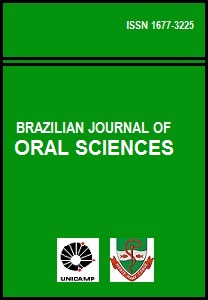Abstract
Aim: This in vitro study evaluated gap width formation and marginal microleakage in Class II composite restorations light-cured with three different light-curing units. Methods: Standardized cavities in the proximal surfaces of 36 human third molars were made with margins located below the cementoenamel junction. Cavities were restored with Filtek P60 (3M ESPE), inserted with a photocondenser tip and light-cured with three different methods: GI - Optilux401 (halogen); GII – ColtoluxLED (LED) and GIII –UltraLumeLED5 (LED). After finishing the restorations, teeth were subjected to a thermal cycling regimen of 500 cycles (5o C ± 2o C and 55o C ± 2o C), totalizing 500 cycles. Thereafter, the teeth were sectioned in a buccolingual direction and in the center of the restorations. Half of the specimens (18) were used to evaluate marginal microleakage, by measuring of dye penetration in cross-sectioned specimens, and the other half was used to analyzed the gap formation width by SEM observations (1000X). Data were submitted to Kruskal-Wallis (α=0.05). Results: The mean values of gap width (µm) were: GI 3.28±3.34; GII 1.48±1.89 and GIII 3.11±3.45, and microleakage was not affected by the light-curing units. Conclusions: There were no differences between the light-curing methods in gap formation and marginal microleakage.The Brazilian Journal of Oral Sciences uses the Creative Commons license (CC), thus preserving the integrity of the articles in an open access environment.
Downloads
Download data is not yet available.

